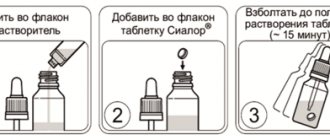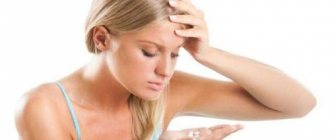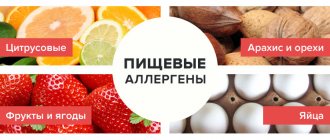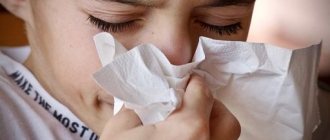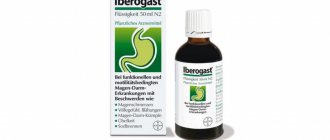Release form, packaging and composition of the drug Clinical-pharmacological group Pharmaco-therapeutic group Pharmacological action Indications for use Method of administration and doses Side effects Contraindications for use Use in children Special instructions Drug interactions
Registration Certificate Holder:
TVERSKAYA PHARMACEUTICAL FACTORY, JSC (Russia)
ATX Code:
R05CA
Active substance:
big plantain
Dosage form:
Plantain tincture
| The drug is approved for use as an over-the-counter product | Plantain tincture | Tincture 25 ml: fl. 1 PC. reg. No.: 71/421/14 — Produced under license |
pharmachologic effect
Herbal product. It has antiseptic, anti-inflammatory, antispasmodic, enveloping and expectorant effects, promotes tissue regeneration and activates gastric secretion.
The antiseptic effect (against staphylococci, Pseudomonas aeruginosa, hemolytic streptococcus) is due to the presence of phytoncides.
Anti-inflammatory, wound- and ulcer-healing effects are associated with the presence of polysaccharides, pectin and tannins, benzoic and salicylic acids. Polysaccharides activate the formation of interferon, zinc and flavonoids help normalize phagocytosis. The combination of polysaccharides with enzymes and vitamins helps accelerate regeneration. These effects are also closely related to the ability of plantain to increase the resistance of cells and tissues to oxygen deficiency. A pronounced antihypoxic effect is provided by organic (especially citric) and phenolcarbonic (ferulic, caffeic, coumaric) acids, flavonoids (derivatives of luteolin, quercetin, apigenin), vitamin C, copper and zinc. The hemostatic effect is associated with the presence of vitamin K.
Plantain regulates digestion, increases appetite, reduces the tone of smooth muscles of the stomach and intestines, has an anti-inflammatory and regenerating effect in gastritis, gastroduodenitis and other inflammatory gastrointestinal diseases. Iridoid glycosides, aucubin, catalpol and bitters included in its composition enhance the secretion of gastric juice and increase the acidity of gastric contents.
Thanks to mucus, enzymes, and phytoncides, plantain also has an expectorant effect and restores the protective function of the ciliated epithelium of the respiratory tract.
Saponins, hydroxycinnamic acids, flavonoids and pectin substances help reduce blood cholesterol levels.
Large plantain
Large plantain
(lat.
Plantago major
) is a species of perennial herbaceous plant of the plantain genus. Plantains are found along roads (hence the name), in weedy places, wastelands, in steppes, meadows, and sands.
Great plantain in plant taxonomy
According to modern classification, the species Great Plantain
belongs to the genus
Plantain
, is included in the family
Plantainaceae
, order
Lamiaceae
, class
Dicotyledons
, department
Angiosperms
, kingdom
Plants
.
Properties of plantain
Great plantain leaves are used as:
- wound healing
- anti-inflammatory
- hemostatic
- painkiller
- bactericidal agent.
Use of plantain
Infusions and decoctions are prepared from plantain. For example, pharmacies sell plantain leaves in briquettes, on which you can prepare infusions of water. A decoction of the leaves is used for diseases of the gastrointestinal tract, including peptic ulcers of the stomach and duodenum. Plantain juice helps with gastritis with low acidity and chronic colitis. For heartburn, the following preparation is recommended:
- plantain leaves - 20 g
- St. John's wort herb - 20 g
- chamomile inflorescences - 5 g.
Prepare an infusion, take 1 tbsp. spoon 3 times a day. For diseases of the esophagus, the following collection can also be recommended:
- plantain leaves - 2 parts
- dried herb - 3 parts
- chamomile flowers - 2 parts
- celandine herb - 1.5 parts
- St. John's wort herb - 2 parts
- calendula flowers - 2 parts
- centaury herb - 1 part
- oat seeds - 5 parts
- crushed rose hips - 5 parts.
Pour boiling water (500 ml) over the collection (2-3 tablespoons), it is best to place it in a thermos overnight.
Then strain, drink 40-50 ml warm 5-6 times a day after meals. You can add honey and lemon to the mixture to taste, but not sugar! (Zaikin D.) At the end of an exacerbation or during remission of GERD, herbal medicine may be prescribed:
- chamomile (flowers) – 5 g
- St. John's wort (herb) - 20 g
- large plantain (leaves) - 20 g.
Take the infusion 1 tbsp.
spoon 3-4 times a day 15-20 minutes before meals. (Privorotsky V.F., Luppova N.E.) Collections of medicinal plants recommended for children with gastritis, enteritis, enterocolitis can be viewed here.
For treatment of gastritis with low acidity using folk remedies and medicinal plants, see here.
For treatment of constipation with medicinal plants, see here.
The effect of plantain on stomach acidity
Large plantain, which has anti-inflammatory properties, normalizes gastric secretion and protects against the damaging effects of gastric juice.
The plantain is big. Contraindications
People who have increased blood clotting and a tendency to form blood clots are not recommended to take plantain preparations during treatment.
Use of plantain in pharmaceuticals
In Russia, drugs have been registered (have been registered) in which the main active ingredient is plantain leaves (Plantaginis majoris folia). Great plantain leaves
are a herbal remedy; has anti-inflammatory, antiseptic, antimicrobial bacteriostatic (against staphylococci, Pseudomonas aeruginosa, hemolytic streptococcus), hemostatic, antiallergic, analgesic, expectorant, sedative, hypotensive and laxative effects.
Stimulates tissue regeneration, enhances the secretory activity of the glands of the stomach and intestines. It has a mucolytic effect, helps normalize the properties of respiratory tract surfactant and restore the functions of the ciliated epithelium. The anti-inflammatory effect is due to the presence of polysaccharides (mucus, pectins), carotene and vitamin B. By reducing the concentration of cholesterol in the blood, it has an anti-sclerotic effect.
Indications
- hypoacid gastritis
- colitis, enteritis, enterocolitis
- dysentery
- constipation
- kidney disease, urethritis, cystitis
- atherosclerosis, arterial hypertension
- trophic ulcers
- bruises, wounds (including purulent ones), cuts, burns, boils, acne
- inflammatory diseases of the oral cavity and nasopharynx
- metrorrhagia, atopic dermatitis (common neurodermatitis)
- bronchitis, whooping cough, bronchial asthma (as an expectorant)
Dosing
. Orally, as an infusion, 30 minutes after meals, 2 tablespoons 2-3 times a day for 7-10 days or as a tincture, 30-40 drops 3 times a day for 2-3 weeks.
Large plantain leaves
(Plantaginis majoris folia): crushed vegetable raw materials;
is produced in cardboard packs of 35, 50, 75 or 100 g by the Krasnodar pharmaceutical factory, Microgen NPO FSUE (Belorechensk), by the company ZDOROVE, (Russia) or in filter bags of 1.5 g in cardboard packs by the Krasnogorskleksredstva company. Large leaf plantain briquette
(Plantaginis majoris folii briket): medicinal plant raw materials for preparing infusions, manufacturer: Evalar (Russia);
the deadline has expired. Plantain tincture
(Tinctura Plantaginis): dark glass bottle 25, 30, 40, 50 ml; produced by Murom Instrument-Making Plant, Tver Pharmaceutical Factory (Russia).
Also registered is a drug with the active ingredient - plantain juice
.
Plantain juice stimulates the secretion of gastric juice. Indications
- Chronic anacid gastritis
- stomach ulcer
- duodenal ulcer with normal or decreased secretion of gastric juice
- chronic colitis
Dosing
.
Inside. 1 tablespoon 3 times a day 15-30 minutes before meals. The course of treatment is one month. Large plantain juice
is produced by VIFITECH (Russia) in a 100 ml dark glass bottle.
In Russia, VIFITECH also produces a medicinal product with the active ingredient of plantain leaf extract
(Plantaginis majoris foliorum extract)
plantaglucid
, and in Ukraine by the pharmaceutical company Health - Plantacid.
Great plantain leaf extract
is an antispasmodic of plant origin.
Reduces the tone of smooth muscles of the stomach and intestines, has a moderate anti-inflammatory effect. Strengthens the secretion of gastric juice, increasing its acidity. Indications
- Hypoacid gastritis
Contraindications
.
Hypersensitivity, hyperacid gastritis, peptic ulcer of the stomach and duodenum in the acute stage. Dosing
.
Inside, 20-30 minutes before meals. Adults and children over 12 years old - 1 g (1 teaspoon) 2-3 times a day. Children 6-12 years old - 0.5 g (½ teaspoon), under 6 years old - 0.25 g (¼ teaspoon) two to three times a day. The duration of treatment is three to four weeks. To prevent relapses, the drug is used in the same doses once or twice a day for one to two months. Plantaglucidum
is an antispasmodic and anti-inflammatory agent. According to the pharmacological index, plantaglucide belongs to the group “Other non-narcotic analgesics, including non-steroidal and other anti-inflammatory drugs”. It has an ATC code of A03 and belongs to the group “Drugs for the treatment of functional disorders of the gastrointestinal tract”.
The drug is used for hypoacid gastritis, gastric and duodenal ulcers with normal and low acidity during exacerbations and for the prevention of relapses (Okulova G., Firsova L.D., etc.).
Dosing
. Orally in the form of granules 0.5-1 g (½-1 teaspoon) two to three times a day 20-30 minutes before meals; Before taking the drug, dilute it in ¼ glass of warm water. The duration of treatment with plantaglucide during an exacerbation is three to four weeks. To prevent relapses, take 1 g once or twice a day for one to two months. The drug plantaglucide is available in granules in 50 g bottles. Store it in a dry place.
Large plantain leaves
are part of a combined preparation of plant origin that has an expectorant and anti-inflammatory effect:
Coltsfoot leaves + Great plantain leaves + Licorice roots (Farfarae tussilaginis folia + Plantaginis majoris folia + Glycyrrhizae radices) - breast collection No. 2 (Pectorales species No. 2) .
Produced in paper bags of 35, 50, 100 g, in a pack of cardboard by the company St.-Medipharm (Stavropol Territory, Russia); Microgen NPO Federal State Unitary Enterprise of the Ministry of Health of the Russian Federation (Belorechensk, Russia).
Composition and release form
Plant materials for preparing the infusion:
- 100 g of collection No. 1 contain a mixture of crushed medicinal plant materials - marshmallow roots and coltsfoot leaves 40% each, oregano herb 20%; in paper bags of 35 g, in a cardboard pack 1 packet.
- 100 g of collection No. 2 - a mixture of crushed medicinal plant materials - coltsfoot leaves 40%, plantain leaves and licorice roots 30% each; in polypropylene bags of 25 g or in paper bags of 35 g, 1 bag in a cardboard pack.
- 100 g of collection No. 4 - a mixture of crushed medicinal plant materials - chamomile flowers, wild rosemary shoots, calendula flowers and violet herb 20% each, licorice roots 15%, mint leaves 5%; in paper bags of 30 or 50 g, in a cardboard pack 1 bag or in filter bags of 2 g, in a cardboard pack 10 or 20 filter bags.
pharmachologic effect
- expectorant
- anti-inflammatory
- bronchodilator
- general tonic
Indications of the drug Chest collection No. 2
- infectious and inflammatory diseases of the respiratory tract, accompanied by cough
Directions for use and dosage:
4 g (1 tablespoon) of collection No. 1 or No. 2 or 10 g (2 tablespoons) of collection No. 4 are placed in an enamel bowl, poured with 1 glass of cold water (collections No. 1 and No. 2) or boiling water (collection No. 4), heat in a water bath for 15 minutes, leave at room temperature for 45 minutes, filter, squeeze out the remaining raw materials. The volume of the resulting infusion is adjusted to 200 ml with boiled water.
Take hot, ½ cup of collection No. 1 or collection No. 2 three to four times a day, ⅓ glass of collection No. 4 three times a day for 2-3 weeks. The prepared infusion is shaken before use. One collection filter bag No. 4 is placed in a glass or enamel container, poured with 1 cup of boiling water, covered and left for 15 minutes. Take ½-1 glass 3 times a day for two to three weeks. Storage conditions for the drug Chest collection No. 2:
in a dry place, protected from light.
Prepared infusion - in a cool place for no more than 2 days. Breast collection No. 3 (Pectorales species No. 2): active ingredient Marshmallow roots + Anise fruits + Licorice roots + Common pine buds + Salvia officinalis leaves (Althaeae officinalis radices + Anisi vulgaris fructus + Glycyrrhizae radices + Pini sylvestris gemmae + Salviae officinalis folia )
Produced in polypropylene bags 50 g, by Zdorovye (Russia).
Special instructions
: the finished infusion is stored in a cool place for no more than 48 hours.
Large plantain leaves
are included in the expectorant collection:
Ledum marsh shoots + Elecampane rhizomes with roots + Calendula officinalis flowers + Coltsfoot leaves + Peppermint leaves + Great plantain leaves + Chamomile flowers + Licorice roots (Ledi palustris cormus + Inulae rhizomata cum radicibus + Calendulae officinalis flores + Farfarae tussilaginis folia + Menthae piperitae folia + Plantaginis maj)
The medicinal collection is produced in 50 g paper bags, manufacturer: Lek S+ (Russia). Belongs to the pharmacological group “Secretolytics and stimulants of motor function of the respiratory tract in combinations.”
Release forms
Plantain gel with extracts of medicinal herbs
“Sustamed” are produced by Fitosil-Bios, Corvette Pharma (Russia).
Herbion plantain syrup
(Herbion plantain syrup): Brown to reddish-brown syrup with a characteristic odor.
Slight opalescence is acceptable. It has an expectorant, anti-inflammatory, antimicrobial (bacteriostatic) effect. Indications
- in complex therapy of inflammatory diseases of the upper respiratory tract accompanied by dry cough
- for dry cough of smokers.
Cough syrup with plantain and coltsfoot
(Sirup anticough wiht plantain and coldsfoot): dark glass bottle 100 ml, produced by Natur Produkt Europe BV (Netherlands).
ATC code R05CA10 “Combination of expectorants.” Indications
- acute and chronic diseases of the respiratory tract (as part of complex therapy): tracheitis; tracheobronchitis; bronchitis; bronchopneumonia
Interaction: cough syrup with plantain and coltsfoot should not be used simultaneously with preparations containing codeine and other antitussive drugs, because
this makes it difficult to cough up thin mucus. Laxative drug
from Madaus (Germany), manufactured by Madaus Pharmaceuticals Private Limited (India)
Agiolax
: granules for oral administration;
container made of combined material 100 g. Has ATC code A06AB and belongs to the group “Contact laxatives”. Indications
- chronic, atonic or functional constipation (in children, the elderly, in the postoperative period, during pregnancy)
- for hemorrhoids and rectal fissures
- preparation for x-ray examination and endoscopy
Directions for use and dosage
: orally, without chewing, with plenty of water (about 250 ml).
For constipation, adults and children over 12 years old - 1 teaspoon in the evening, after meals and, if necessary, in the morning, before breakfast; in severe cases - 1 teaspoon every 6 hours for 1-3 days; children from 7 to 12 years old - 1 teaspoon daily. To prepare for examinations - 3-6 teaspoons once 1 day (24 hours) before the examination. Laxative drug
from Doctor Falk Pharma GmbH (Germany), manufactured by Losan Pharma GmbH (Germany)
Mucofalk
: granules for preparing a suspension for oral administration;
5 g bag. Has ATC code A06AC01 Isfagul (oval plantain or flea seed). Indications
- constipation (including during pregnancy)
- anal fissures
- haemorrhoids
- postoperative period for interventions in the anorectal area (in order to create a softer stool consistency)
- functional diarrhea
- irritable bowel syndrome
- colonic diverticulosis
- Crohn's disease (normalization of stool)
Plantain
seed powder is part of a combination preparation with natural components of plant and animal origin and microelements -
Vitrum Atherolitin*
: film-coated tablets; polyethylene bottle (bottle) 100, cardboard pack 1; from Unipharm, Inc. (USA), time limit has expired. ATC code A11AB “Multivitamins in combination with other drugs.”
Pharmacological action - replenishes the deficiency of vitamins and minerals.
Note.
For drugs marked with an asterisk, registration in Russia has ended and there is no information about its renewal. In pharmacies, a number of them can be sold as dietary supplements Back to section
Indications for use
For the treatment of gastrointestinal diseases: acute and chronic gastritis, peptic ulcer of the stomach and duodenum with preserved and reduced secretion, enterocolitis, fermentopathy, dysbacteriosis.
For the treatment of infectious and inflammatory diseases of the respiratory system, incl. rhinitis, tonsillopharyngitis, bronchitis, pneumonia, whooping cough.
For external use: dermatitis of various etiologies, wounds, cuts, bruises, trophic ulcers, boils, abscesses, burns.
For local use: gynecological diseases, cervical erosion.
Contraindications and harm
For certain ailments, using plantain is not recommended. As a rule, we are talking about the following diseases:
- chronic diseases of the gastrointestinal tract in the acute phase;
- gastritis with high acidity;
- problems with blood clotting;
- allergy to plantain.
Let me remind you that side effects from using this plant may include the following:
- nausea and vomiting;
- abdominal pain;
- diarrhea;
- dizziness.
Carefully monitor your body's reaction to plantain preparations, and if you experience any suspicious sensations or deterioration in your health, consult a doctor immediately.
Directions for use and doses
The method of administration and dosage regimen of a particular drug depend on its release form and other factors. The optimal dosage regimen is determined by the doctor. The compliance of the dosage form of a particular drug with the indications for use and dosage regimen should be strictly observed.
To treat gastrointestinal diseases, plantain is used orally in the form of a prepared infusion of 15-50 ml 15-30 minutes before meals. The course of treatment is 1-8 weeks. Juice is used 1 tbsp. spoon (dissolved in 50 ml of warm water) 15-20 minutes before meals 3-4 times a day for 1 month.
For the treatment of respiratory diseases, plantain is used in the form of infusion or juice in the same doses but 30 minutes after meals. For colds, juice diluted 5-10 times with warm water can be instilled 2-3 drops into each nostril 3-6 times a day.
For the treatment of dermatological diseases, the juice and infusion can be used externally in the form of dressings, lotions or rinses, 3-4 times a day, and for burns - regularly, with an interval of 1-1.5 hours.
In gynecological practice, juice is used in the form of douches, baths, instillations, and vaginal tampons.
Plant species
There are many types of plantain in nature, and no matter how useful it is, biology officially classifies it as a weed. However, this does not prevent the humble plant from being regularly used in various medicines and being a real hero of folk medicine.
Among the most common species in our country are:
- big;
- flea or flea infested;
- lanceolate;
- average;
- Asiatic.
This plant has a small but developed rhizome. Its leaves have a characteristic oval shape and are located in a basal rosette.
The flowers have the appearance of a long spike and can reach a height of 10 to 25 centimeters.
Use in medicine
The benefits of plantain in the form of an alcohol tincture for hypertension are known. Due to its expectorant properties, the plant is included in effective chest collections.
You can purchase the Plantaglucid suspension at the pharmacy as prescribed by a doctor, the base of which is an aqueous extract of plantain. Taking the drug is indicated for dysbacteriosis, peptic ulcers, cough, gastritis, pneumonia, bronchitis.
"Gerbion" - plantain cough syrup - is used successfully. To cope with constipation, use Fibrolax.
Dried parts of the plant are sold in pharmacies. Medicines are prepared from them independently. Be sure to first study the instructions for using plantain, which determine the required proportions and dosages.
In home cosmetology
Plantain grass is in demand in the field of cosmetology. The plant helps improve the condition of weakened, dull hair, reduces oily skin, and effectively fights acne.
For face
If you use plantain correctly on your face, you will be able to effectively moisturize the skin, cleanse pores, even out the shade, and smooth out minor wrinkles.
For homemade tonic:
- 2 tbsp. l. of ground dry herb is steamed with actively boiling water - 200 ml.
- The cooled infusion, strained through a strainer, is distributed into molds.
- Freeze.
- Use in the morning to wash your face.
After just three weeks, the skin acquires a glow, becomes more elastic and fresh.
Plantain has been successfully used for acne. To cleanse problem skin:
- Dry leaves of the plant - 4 tbsp. l. placed in a bottle with 40 ml of alcohol diluted in 200 ml of filtered water.
- They insist for a week.
- Squeeze out the liquid through two layers of gauze.
Wipe acne-covered areas of the face with lotion twice a day.
For hair
It is recommended to use plantain for hair to strengthen and eliminate dandruff:
- Rinse fresh leaves.
- Wipe with a cloth.
- Chop or grind in a meat grinder.
- Squeeze out the juice thoroughly.
- Rub into hair roots.
- Wash off after two hours.
Repeat at intervals of two days.
Chemical composition
Great plantain has a rich and unique chemical composition. The leaves of the plant contain vitamin K and a considerable amount of vitamin C (289 mg%), citric and oleic acids and in addition a large percentage of nitrogenous and non-nitrogenous extractive substances, fiber, fats, glycoside aucubin, flavonoids, carbohydrate beckons, tannins, bitterness. Particular attention should be paid to the fact that the leaves of the great plantain contain a whole list of macro- and microelements, among which the first place is occupied by potassium (44.6 mg/g) and calcium (39.3 mg/g), as well as iron and manganese , copper, zinc, cobalt, molybdenum, chromium, barium, vanadium, selenium, nickel, strontium, lead and boron. Plantain seeds contain a large percentage (up to 44%) of mucilage, fatty oil (20%), protein (22%) and amino acids (16%), and also contain plantose and steroid saponins.
Folk remedies
Alternative medicine successfully uses plantain to produce a variety of medicinal compounds that have a beneficial effect on the body.
Tea
You will need dried plantain seeds, purchased at the pharmacy.
Preparation:
- Measure out 1 tbsp. l. plant seed.
- Pour into a faience glass.
- Pour in 50 ml. boiled water cooled to 40 degrees.
- After 25 minutes, pour the raw material onto a strainer to drain the liquid.
- The swollen seeds are placed back into the glass.
- Steam 200 ml. boiling water
- Leave under a thick linen cloth for 30 minutes.
The finished plantain tea is decanted, divided into three equal portions, and consumed throughout the day.
Decoction
For preparation, take the dried, crushed aerial part of the medicinal plant.
How to cook:
- Place 3 tbsp. l. raw materials into an enamel saucepan.
- Pour a glass of cool water over the grass.
- Place the container on the stove.
- After boiling, cook on low heat for 25 minutes.
- The plantain decoction is cooled.
- Filter using double gauze.
Infusion
You can quickly prepare a healing infusion of plantain if you use a thermos.
Sequencing:
- Dried plantain leaves are crushed.
- Transfer 4 tbsp. l. prepared raw materials in a thermos.
- Pour in a liter of boiled water.
- Leave for a quarter of an hour.
- Squeeze out the medicinal liquid through gauze.
Tincture
For medicinal purposes at home, plantain tincture is often used.
Preparation:
- Collect fresh leaf blades of the plant.
- Rinse.
- Wipe with a soft cloth.
- Pass the raw materials through a meat grinder (or turn into pulp using a blender).
- Squeeze out the juice quickly.
- Pour into a glass container.
- Add the same amount of vodka (equal to juice).
- Keep the hermetically sealed vessel in a closet for three weeks.
The finished tincture is used for its intended purpose.
